11048 A UNIQUE TRAVELING BOX DECORATED WITH A RANGE OF EXQUISITE AND RARE EMBROIDERED TECHNIQUES OF THE UTMOST SOPHISTICATION BEARING THE ARMS OF JEAN DE PUPIL DE CRAPONNE (1639-CIRCA 1714), GENTILHOMME DE LA VENERIE DU ROI Lyon. Late Seventeenth Century. Measurements: Height: 3 1/4″ (8 cm) Width: 10″ (25.5 cm) Depth: 7 1/2″ (19 cm).
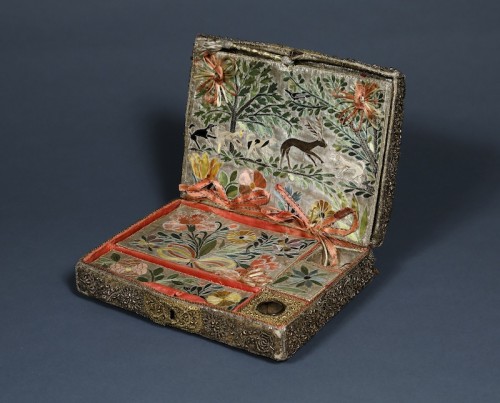
Research
Exterior of vellum and leather with complex and varying patterns of fils d’or, original ribbons on hinges. Interior lid of excellently preserved silver lamé, original mirror in center with border of further fils d’or related to that on the exterior, and coat of arms in lower center representing the arms of the Pupil family. Interior decorative designs delineated with twisted silver guipé thread. Removable inner flap is decorated on both sides against grounds of silver lamé; one showing a flower vase with a variety of different blooms, the other showing a hunting scene with four hounds chasing a stag in a forest. Leaves and petals composed of glued “floss silk” with some losses; evidence in some areas of gold paper beneath. Flap bears elaborate tassel for easy manipulation, inside of hinges with original ribbons, lower section compartmentalized into four sections, three of which are decorated with further floral designs, one of which retains an original glass inkwell and is decorated with more fils d’or, this time untarnished. Evidence of gothic script on hidden surfaces suggests the reuse of older paper sections to form structure. Original lock and key.
Provenance:
Almost certainly made for Jean de Pupil de Craponne (1639-c.1714) écuyer de Lyon and Gentilhomme de la Venerie du Roi.
The present object represents the survival of a number of embroidery techniques of remarkable sophistication, including guipé silver thread, ribbon and tassel-work, fil d’or and an extensive quantity of silver lamé.
Crucially, on the interior, the box bears an armorial shield, which has been identified as the arms of the Pupil family (figure 1), who were among the wealthiest in late seventeenth century Lyon. At the time that the box was made, the head of the family was Jean Pupil de Craponne, an écuyer or gentleman of the city, and Lord of the territories of La Tour-en-Jarez and Saint-Jean-Bonnefonds. The box contains a scene showing a stag being chased through a forest by four hounds, very likely a reference to Pupil’s most prestigious title, Gentilhomme de la Venerie du Roi or Gentleman of the King’s Hunt. Hunting in ancien régime France was an activity explicitly reserved for the nobility and the hunting of stags was for the king alone.1 Officers serving the king’s hunts were supervised by the grand veneur, under him a commandant, an écuyer, four lieutenants, four sous-lieutenants de vénerie and 40 gentilhommes de la vénerie, who would take turns to attend.2 The Vénerie was one of the composite departments of the Maison du Roi, Louis XIV’s personal household and hunting was “first rank among the pleasures of the king and therefore occupied a very important position in His Majesty’s household.”3 The Memoirs of the Duc de Saint-Simon, chronicler of life at the court of Louis XIV explain, “the stag-hunts were on an extensive scale … only those were allowed to go who had obtained the permission, and those who had obtained leave to wear the justaucorps, a blue uniform with gold and silver lace, lined with red. The king did not like too many people at these hunts”.4
Such a box was to be taken with its owner when traveling, like a compact nécessaire de voyage or traveling box. Its use for the storage of cosmetics is suggested by the original mirror in the inside lid, and writing equipment, by the inclusion of a glass inkwell. Perhaps it was a commemoration on the occasion of Pupil’s elevation to Gentilhomme de la Venerie to be taken hunting, although its remarkable condition would suggest if this was the case, it was not used very often and perhaps had symbolic significance in this regard. Owing to the magnitude of the piece, it is even possible that it was a gift from the king. According to curators, the only other comparable box appeared on the international art market in 1994, which displayed related design and decoration to the present piece. This one however bore the arms of the Medici family and an image of St Margaret, which led experts to believe it was probably made of Marguerite Louis d’Orléans (1645-1721), who was married to Cosimo III de’ Medici in 1661.5
Pupil was also President of the Court of Monies in Lyon during a period when the city was booming, assuming its long-held position as Europe’s main silk production center. As a result he accumulated astronomical wealth. When Louis Nicolas de Largillièrre painted his portrait in 1708 toward the end of his life (figure 2) he was fabulously rich, he is shown wearing a the classically high wig fashionable around the turn of the eighteenth century, and an exquisite brown silk mantel with golden thread detailing on the edges that fills the lower section of the painting covering his hands entirely. His will confirms that on his death his personal fortune consisted of 614,735 livres, which had benefitted enormously from the dowries derived from his two marriages, and an additional 1,416,735 which largely derived from the tax collecting responsibilities awarded to him by the king, making a total sum close to two millions livres.6 In 1700 his remarkable wealth and extravagance fell foul of Louis XIV’s sumptuary laws that aimed to curtail excessive luxury and he was forced to submit a report of the contents of his home in the fashionable Place Bellecour in Lyon, then known as the Place Royal, reflecting its ownership by the king. The extraordinary list includes clocks, mirrors, toilette boxes, firedogs, gilt-bronze encrusted furniture, chairs and footstools covered in gold and silver fabric and claims that three of the rooms were lined with paneling that was “threaded with gold” presumably meaning they were set with panels of gold fabric.7
The decorative technique on the exterior of the box is especially unusual, formed of intricately fashioned chains laid out in complex patterns, more akin to the decorative techniques used in the creation of jewelry or filigree work. A similar technique appears on the exterior of a box in the Louvre Museum (figure 3), a medium that the museum refers to as fils d’or, simply meaning golden wire. However the present piece shows a remarkable range of different shapes and formats of this wire, creating a pattern of staggering complexity. The wire also appears in the interior decoration of the box, where it retains its original bright golden color; thus when new the exterior of the box would have appeared bright and glittering. The black vellum exterior is notable. This treated calf’s skin had historically been used as a medium for manuscripts since antiquity, however Louis XIV recognized its adaptability to a number of different uses, founding the Atelier des Velins du Roi based in Les Invalides in Paris, which specialized in producing both colorful painted works like cabinet pictures and fans, often illuminated with gold, similar to the medieval tradition.8 Vellum was also frequently used at the time for exquisite art of reliure or book binding, to which the covering of the present piece is related. Vellum, combined with the fils d’or would have served as an attractive but practical covering.
The conservation of the box revealed the fascinating re-use of manuscript paper, probably dating from the fifteenth or sixteenth century in the structure of the box (figure 4). Such practices may seem to surprising in the modern day, however it was not uncommon, such paper was used especially frequently to form the bases of elaborate gaming purses.
The interior of the box is a stunningly colorful contrast to the exterior and is most defined by the survival of shimmering silver lamé. This effect is achieved when a fabric is woven with thin strips of silver giving it a mirror-like uniformity of surface. The interior of the lid bears the original mirror, surrounded by a complex floral design. Such floral designs are repeated throughout the interior of the box, delineated by twisted silver thread or guipé. However the textured, striated effect on the petals and leaves is achieved by individual strands of incredibly fine “floss silk”, that have been adhered in rows on to a ground, sometimes of silver or gold paper which has become exposed in places, to create an even more glamorous visual effect, a process of considerable complexity and expense. Randall Holme, Charles II’s “sewer of the chamber of the extraordinary” wrote a book entitled The Academy of Armory in 1688, in which he described “gum work, by gumming several colors of sleeven silk, which being dry, they cut into shapes of leaves and flowers”.9 An interior flap serves to protect the compartments below, on one side it is decorated with a remarkable flower vase design, with a carnation, rose, tulip, peony, cornflowers and orchids. On the hunting scene there is also evidence of the application of woven textiles, like the bark on the trees. The flap can be manipulated by means of a beautiful tassel formed of silk and silver threads and original ribbons decorate the interior of the hinges and the underside of the removable flap.
The box, with its unique combination of complex techniques of manufacture, its original owner’s close relationship to the French crown, and the near-certainty that it is a masterpiece of the Lyon silk industry, conspires to make it one of the great documentary objects of late-seventeenth century France.
Footnotes:
1. Jon Elster (Ed.), Tocqueville: The Ancien Régime and the French Revolution, Cambridge 2011, p. 266
2. http://www.heraldica.org/topics/france/MaisonDuRoi.htm#veneur
3. James Eugene Farmer, Versailles and the Court under Louis XIV, New York 1905, p. 75
4. The Memoires of the Saint-Simon, Vol. III, p. 25
5. We would like to thank Curators in the Furniture, Textiles and Fashion Department at the Victoria and Albert Museum in London for this information.
6. Josette Garnier, Bourgeoisie et propriété immobilière en Forez aux XVIIe et XVIIIe siècles, 1982, p. 209
5. George Guige, Note sur le mobilier de luxe à Lyon en 1700, Paris 1897, p. 13
8. The Vélins du Roi also produced illuminated manuscripts for use in the King’s chapels, See Alexandre Maral, La chapelle royale de Versailles sous Louis XIV: cérémonial, liturgie et musique, Paris 2010, p. 34
9. Genealogical Circle of Mions webpage, http://genealogiemions.free.fr/Pupil.htm
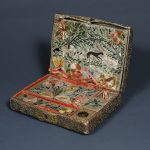
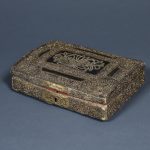


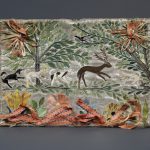
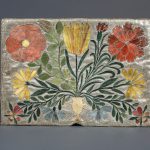
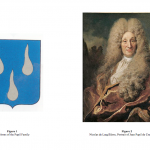
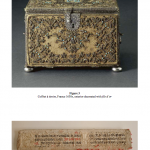
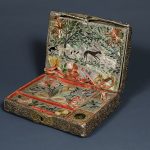
Comments are closed.